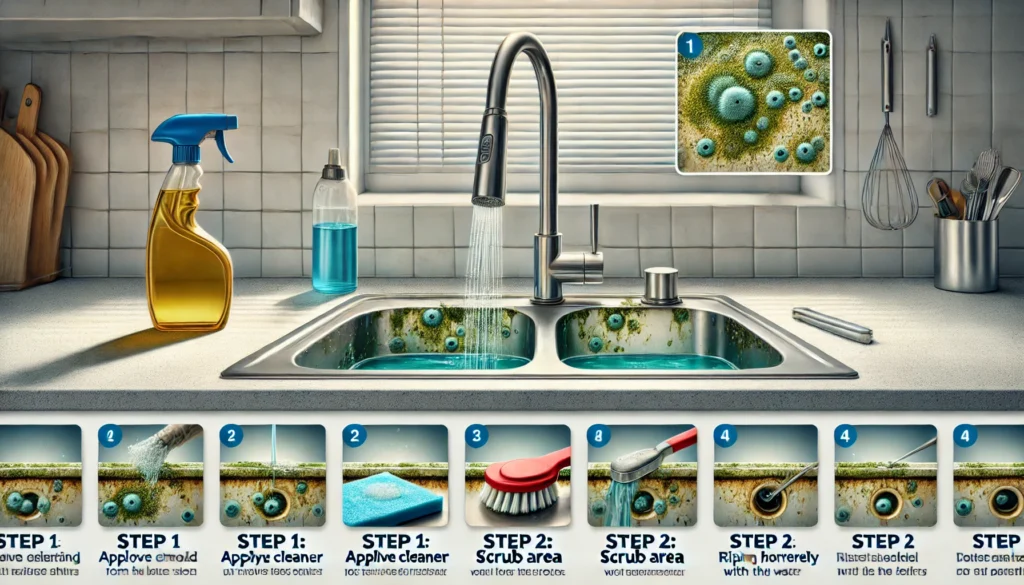Mold slime is an unpleasant sight in the kitchen sink, but it’s a common problem caused by the buildup of mildew in damp, humid environments. Around the drain, faucet, and hidden in the corners, mold slime causes health issues and makes the kitchen feeling less than clean. You remove it with a few simple tools and natural cleaning solutions, you restore the sink to its original, spotless condition.
Things You Need:
Contents
- Rubber gloves
- A mask
- White vinegar
- Baking soda
- Dish soap
- An old toothbrush
- Microfiber cloth
- Water
- A bucket of warm water
Step by step guide
Gather the cleaning supplies and prepare the area
Gather the gloves, a mask, and cleaning tools and start the clearing of the dishes, utensils. Because the cleaning process with an empty sink is efficient. Then open the kitchen windows to provide ventilation. Because these things prevent the inhalation of mold spores and keep the air fresh.
Dry the Sink
Mold thrives in damp conditions is essential to start with a dry surface. Use a clean towel to dry the sink thoroughly before you start cleaning.
Apply Your Cleaning Solution
You can use these things for cleaning mold slime.
- White Vinegar: Fill a spray bottle with undiluted white vinegar and spray it directly onto the affected moldy areas. Vinegar is a powerful, natural disinfectant that kills mold spores.
- Hydrogen Peroxide: Alternatively, spray 3% hydrogen peroxide onto the mold slime. Hydrogen peroxide works similarly to vinegar and will help eliminate the mold effectively.
- Baking Soda Paste: Apply the baking soda paste directly to the moldy areas for extra scrubbing power.
Let the Solution Sit
Once you’ve applied your cleaning solution, let it sit for 10-15 minutes. This gives the solution time to break down the mold and mildew, making it easier to scrub off.
You need to know about the Outdoor Kitchen Sink Drain Tips to Avoid Common Mistakes
Scrub the Mold
Using a scrub brush or an old toothbrush, begin scrubbing the moldy areas. Focus on corners, crevices, and the drain where mold and mildew tend to accumulate. Be sure to apply gentle pressure to scrub away all visible mold slime. For areas with particularly stubborn slime, apply a bit more vinegar or hydrogen peroxide and continue scrubbing.
Clean the Faucet and Drain
Mold doesn’t just settle in the sink basin it builds up around the faucet and in the drain. Spray the cleaning solution around the faucet and drain, then scrub with the brush to remove any hidden mold.
You may need to know about Plumbing Issues Kitchen Sink Problems and Easy Solutions
Rinse and Wipe Down
After scrubbing, it’s time to rinse the sink. Use warm water to rinse away all the cleaning solution and mold residue. Use a bucket of warm water to run the sink. Once the sink is thoroughly rinsed, wipe it down with a microfiber cloth to remove any leftover moisture.
Dispose of Cleaning Materials Properly
Once you’re done cleaning, dispose of any used sponges, brushes properly to avoid spreading mold spores.
Conclusion
Removing mold slime from the kitchen sink doesn’t have to be a daunting task. By using simple ingredients like vinegar, hydrogen peroxide, and baking soda, you effectively tackle the problem and restore your sink to a clean, mold-free condition. Regular cleaning and moisture control are key to preventing mold growth in the future.

